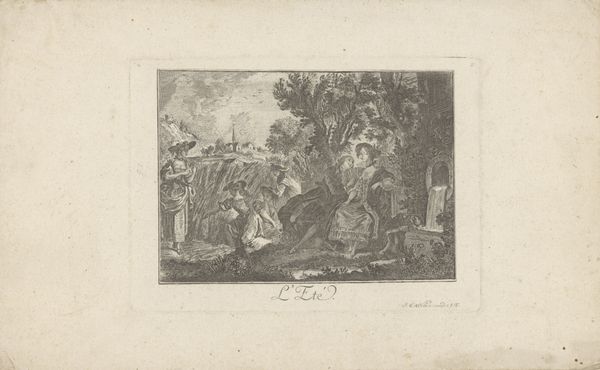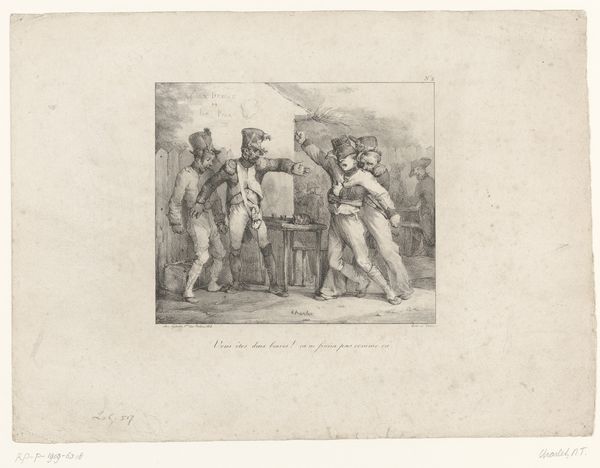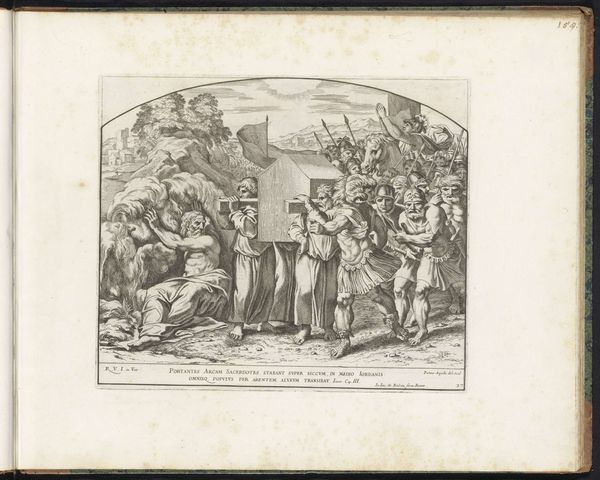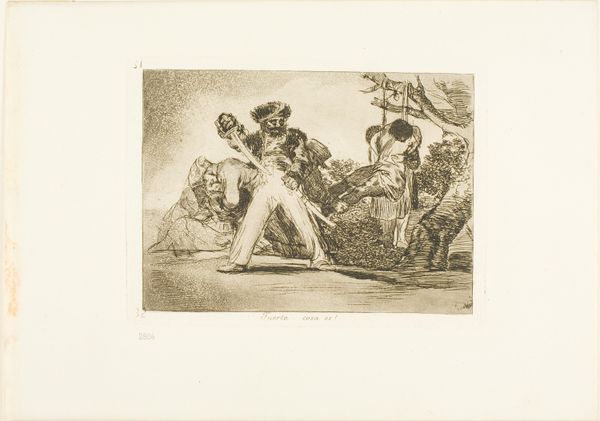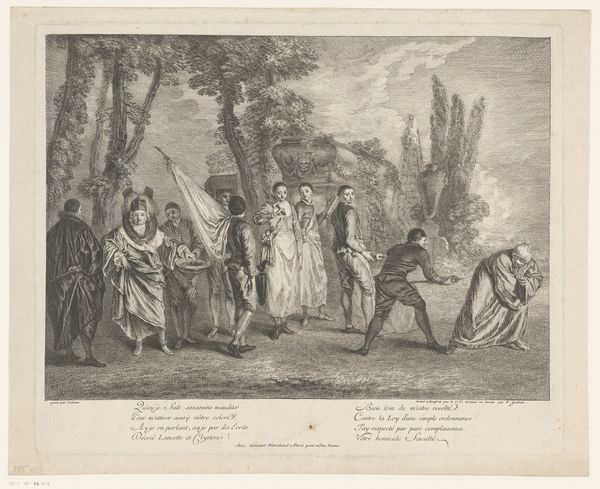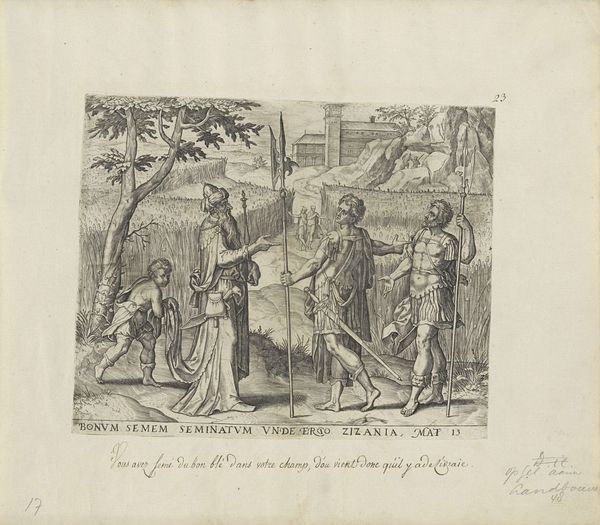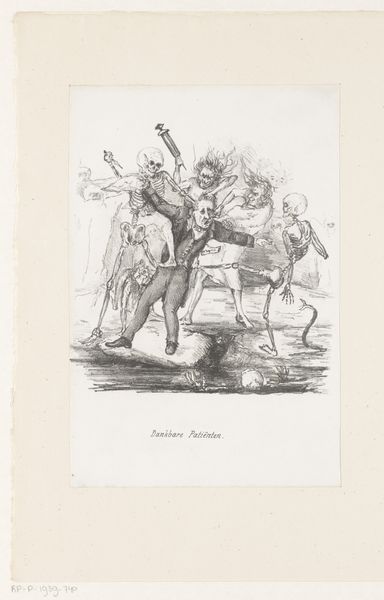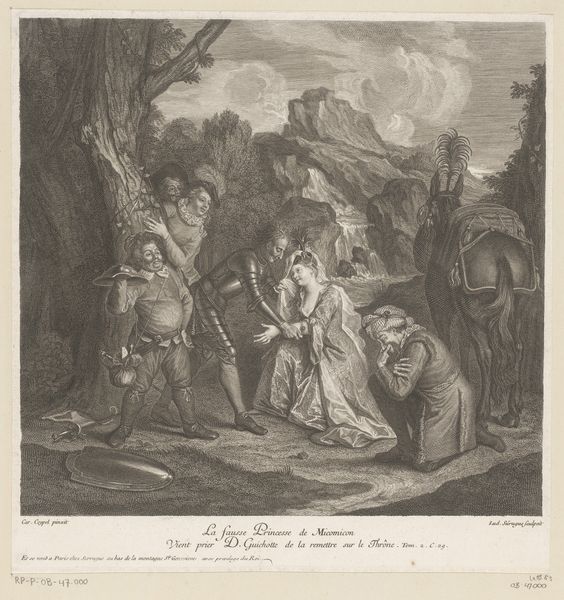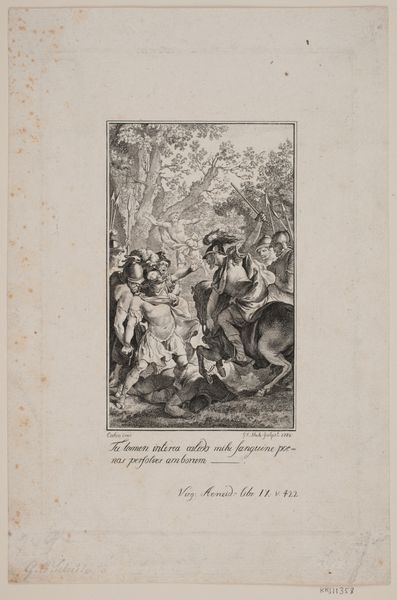
drawing, paper, engraving
#
drawing
#
aged paper
#
light pencil work
#
pencil sketch
#
old engraving style
#
paper
#
personal sketchbook
#
romanticism
#
ink colored
#
sketchbook drawing
#
pencil work
#
genre-painting
#
storyboard and sketchbook work
#
sketchbook art
#
engraving
Dimensions: height 111 mm, width 179 mm
Copyright: Rijks Museum: Open Domain
Curator: Jacob Ernst Marcus created this drawing, "Company in a Wood," in 1816. It's currently housed in the Rijksmuseum. Editor: My first impression is of a rather chaotic yet elegantly rendered scene. There’s a peculiar liveliness captured in this monochromatic work. Curator: The apparent disorder might be exactly the point. Consider the era: early 19th century. Genre paintings often depicted scenes of everyday life, sometimes with a didactic intent. This could be a commentary on social interactions and perhaps even human folly. Editor: That reading resonates, particularly if we scrutinize the figures' gestures and expressions. Their exaggerated postures are not accidental. I am especially intrigued by the materiality here; observe the density of the marks defining these figures; that old engraving style has a certain moodiness to it, don't you think? Curator: Precisely! The meticulous execution, likely engraving or perhaps a very detailed drawing on paper intended for reproduction as an engraving, lends itself to the narrative quality. The use of light and shadow enhances the emotional impact. Think about the composition; the figures are densely packed toward the center, creating a sense of both unity and confinement. Editor: Yes, the visual weight at the center is critical. However, if we think of art's social function during that period, consider its reception by the bourgeois public. Does this drawing, through its careful portrayal of dress and social engagement, function as a mirror reflecting and reinforcing specific class values and behaviours? Curator: An excellent point. By representing the fashions and customs of the day, Marcus situates the work within a distinct socio-economic context. Moreover, consider Romanticism and its engagement with nature, often presenting landscapes as mirrors of internal emotional states; the copse is almost secondary. Editor: So the copse of trees, framing the company in a wood; it seems an excuse, an artificial backdrop almost, despite the very real marks that constitute them... How does the setting influence our understanding of their relationships and perhaps, the larger social dynamics? Curator: Well, I’d say, analysing those gestural qualities of that material offers a more accurate starting point from which we may extract relevant cultural meanings. Editor: Perhaps our different views here highlight art's value and ongoing adaptability, wouldn’t you say?
Comments
No comments
Be the first to comment and join the conversation on the ultimate creative platform.
